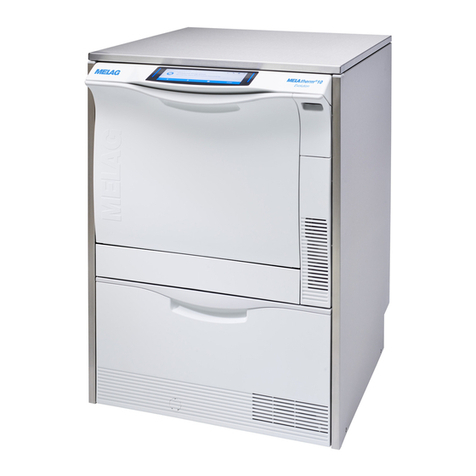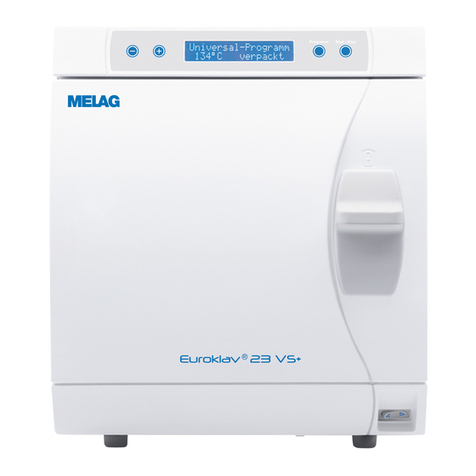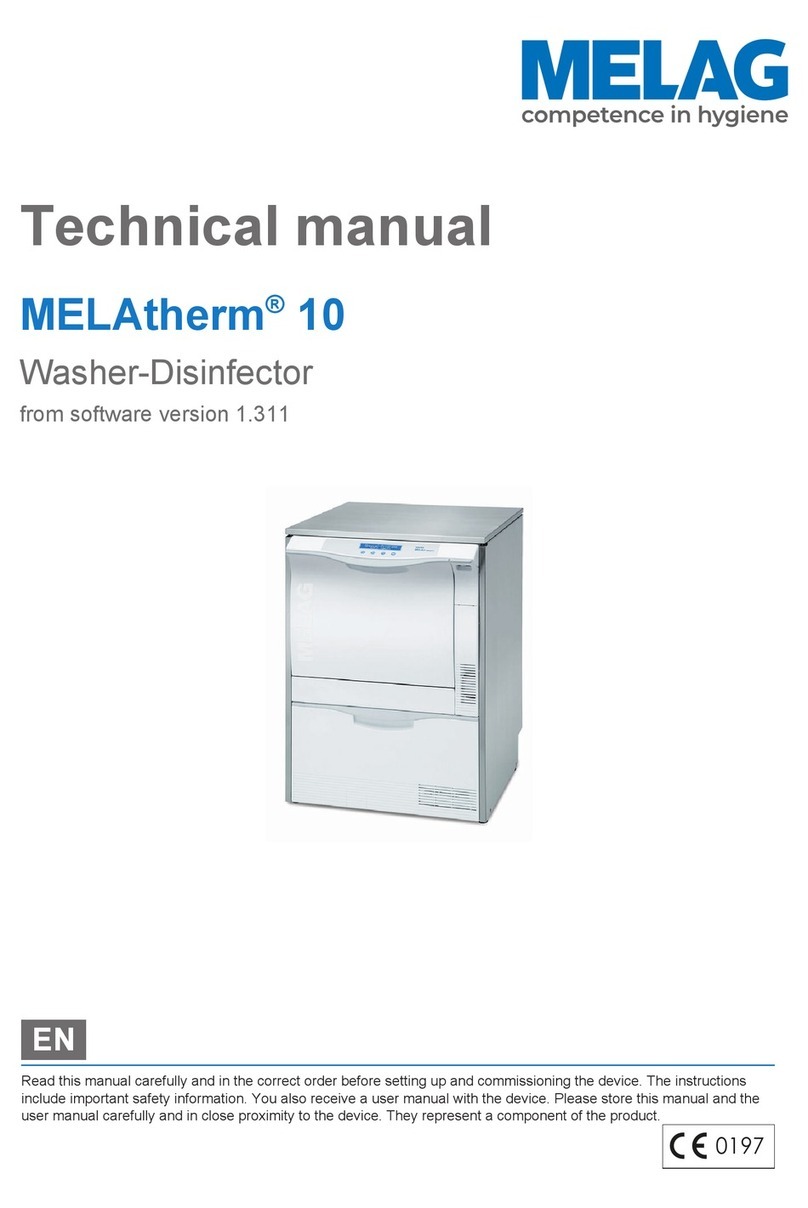
Operating-manual Euroklav®23-S
Page 3
6.2 Selecting extra drying .............................................................................................................................20
6.3 Records / Load documentation...............................................................................................................20
6.3.1 Record print-out .............................................................................................................................20
6.3.1.1 External printer.......................................................................................................................................20
6.3.1.1.1 Connecting the external MELAprint®42 printer 20
6.3.1.1.2 Initialising the printer 21
6.3.1.2 Connection to an external PC................................................................................................................21
6.3.1.2.1 Installation 21
6.3.1.2.2 Downloading to a PC 21
6.3.1.3 No printer 22
6.3.2 Immed. print-out? Yes/No..............................................................................................................22
6.3.3 Printing out stored records.............................................................................................................23
6.3.4 Print all stored cycle records..........................................................................................................24
6.3.5 Display printer memory status .......................................................................................................25
6.3.6 Deleting cycle records....................................................................................................................26
6.3.7 Test print-out..................................................................................................................................27
6.4 Resetting date and time..........................................................................................................................28
6.5 Automatic preheating..............................................................................................................................29
6.6 Total load count ......................................................................................................................................30
6.7 Distilled / demineralized water supply.....................................................................................................31
6.8 Water-system..........................................................................................................................................32
6.9 Program modifications............................................................................................................................32
7SPECIAL FUNCTIONS.................................................................................................................................33
7.1 What to do if the autoclave malfunctions................................................................................................33
7.2 Malfunctions without display messages..................................................................................................33
7.2.1 No display.......................................................................................................................................33
7.2.2 Excessive water consumption........................................................................................................33
7.2.3 Poor drying.....................................................................................................................................33
7.3 Warning messages.................................................................................................................................34
7.4 Error reports............................................................................................................................................37
8TAKING CARE OF YOUR AUTOCLAVE ....................................................................................................40
8.1 Preparation of instruments......................................................................................................................40
8.2 Rust formation = Drag-in rust..................................................................................................................40
8.3 Taking care of the Euroklav®23-S...........................................................................................................40
8.3.1 Cleaning.........................................................................................................................................40
8.3.2 Use of demineralized or distilled water..........................................................................................41
8.4 Checking the operation of the autoclave ................................................................................................42
8.4.1 Safety with automatic monitoring...................................................................................................42
8.4.2 Periodical bacteriological testing (twice a year).............................................................................42
8.4.3 Maintenance recommendations.....................................................................................................42
9ANNEX..........................................................................................................................................................43
9.1 Installation options..................................................................................................................................43
9.2 Additional technical data.........................................................................................................................44
9.2.1 Capacity/Weight.............................................................................................................................44
9.2.2 External supplies............................................................................................................................44
9.2.3 Operational parameters .................................................................................................................44
9.2.3.1 Programs / Operation times...................................................................................................................44
9.2.3.2 Energy / Water consumption *)...............................................................................................................44
9.3 Instructions on drying..............................................................................................................................45
9.3.1 Drying in sterilization containers ....................................................................................................45
9.3.2 Textiles...........................................................................................................................................46
9.3.3 Instruments ....................................................................................................................................47
9.3.4 Loading the autoclave....................................................................................................................47
9.3.5 Loading containers with soft sterilization packing material............................................................47
9.3.6 Stacking sterilization containers.....................................................................................................48
9.3.7 Removing the sterilized items........................................................................................................48
9.3.8 Improving the drying.......................................................................................................................48


































